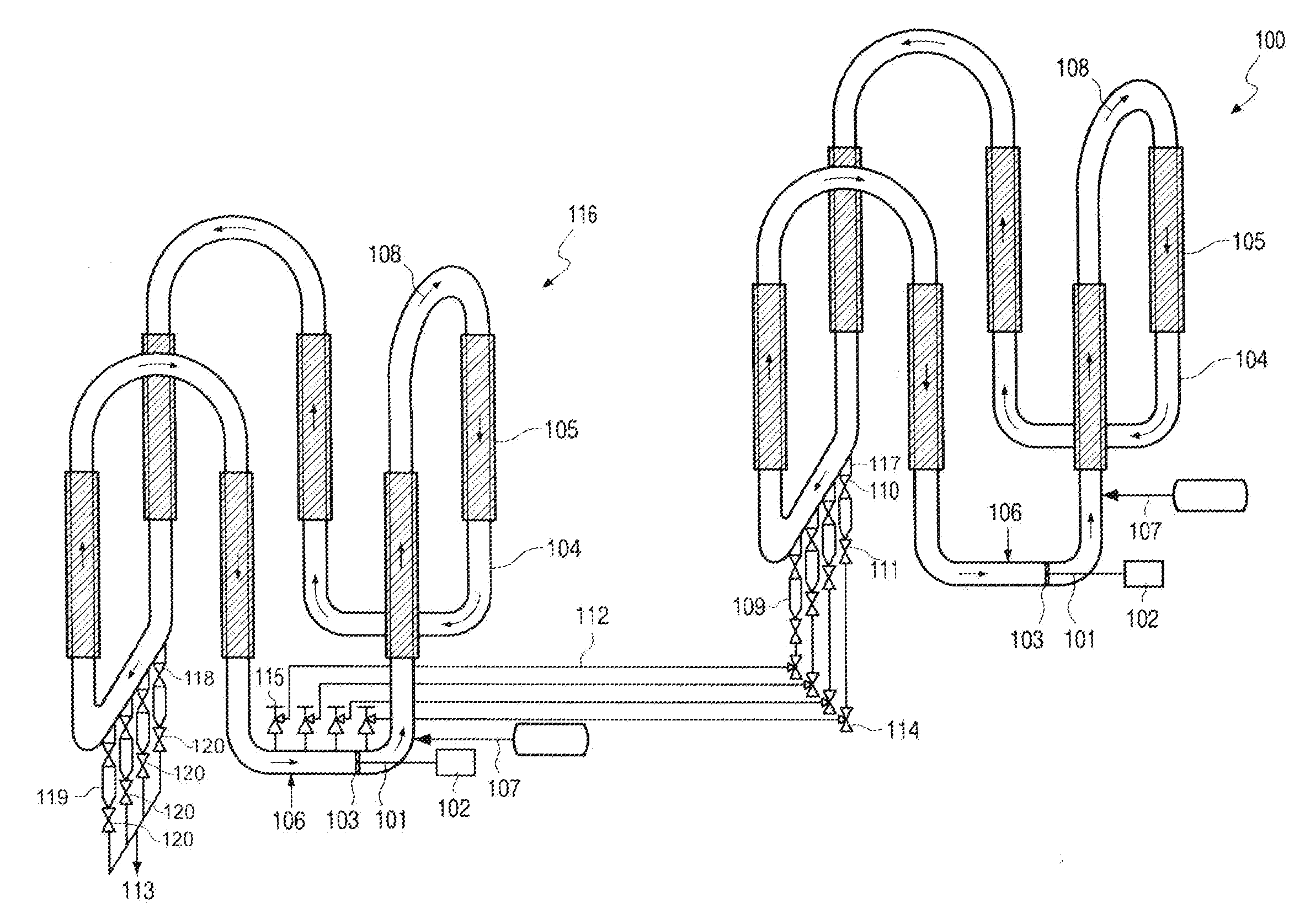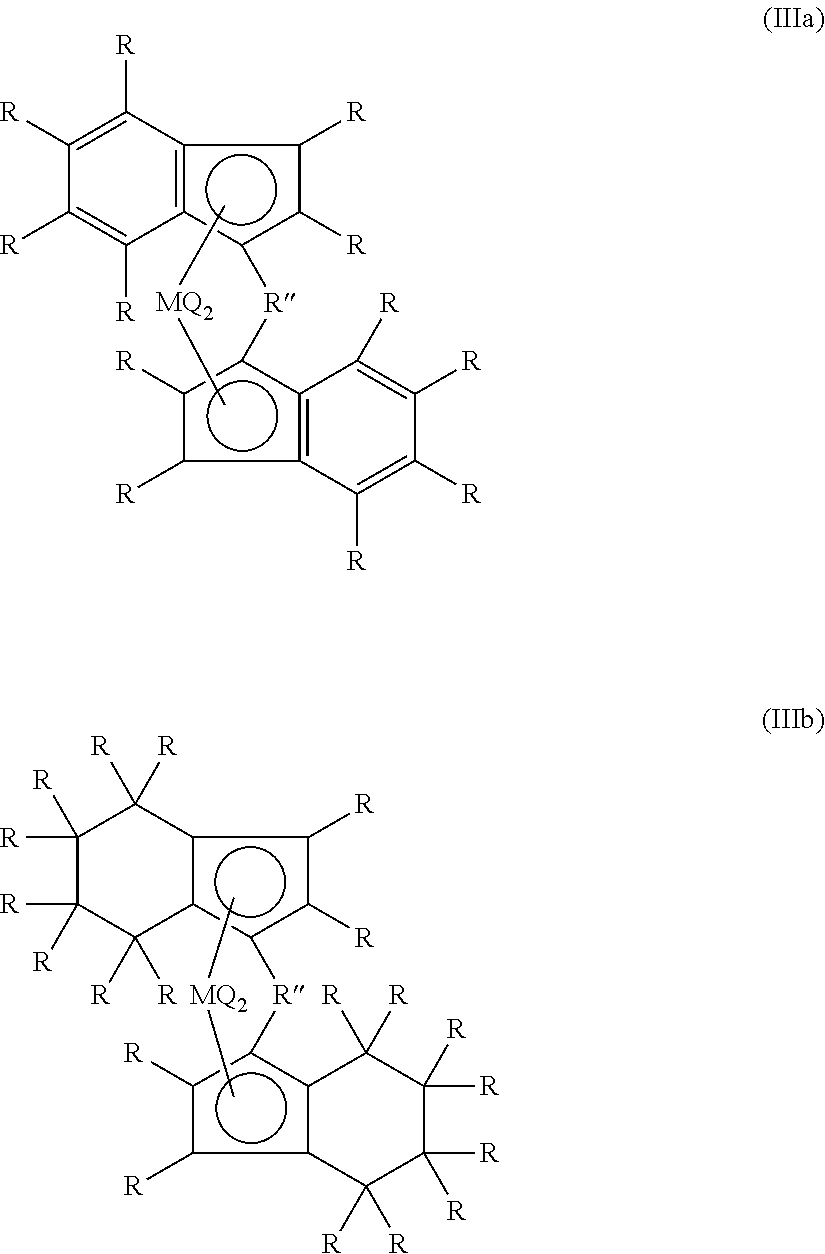Olefin Polymerization Process With Continuous Transfer
a technology of olefin polymerization and continuous transfer, which is applied in the field of olefin polymerization process with continuous transfer, can solve the problems of settling legs, thereby not keeping constant pressure in the loop reactor, and present problems, so as to improve operability/reliability, avoid polymer stagnation, and optimize the effect of residence tim
- Summary
- Abstract
- Description
- Claims
- Application Information
AI Technical Summary
Benefits of technology
Problems solved by technology
Method used
Image
Examples
examples
[0142]An ethylene-hexene copolymer has been produced in presence of a metallocene catalyst inside a double-loop reactor with various configurations of the transfer section to the second reactor. The results are summarized in the following table:
Reduction ofAverage polymerdiluent / reactants flowAverage polymersolidsto downstream reactorsolidsconcentration to(per ton of polymerReactorNumber ofSettling legsconcentration inrecoveryproduced) versusdischargesettling legsdiameterloop reactorsectionscomparative exampleContinuous——41 wt-%41 wt-%comparative exampledischargeContinuous1 (continuously6″41 wt-%51 wt-%−33%dischargeopen settling leg)Discontinuous26″41 wt-%54 wt-%−41% (comparativedischargeexample)
PUM
| Property | Measurement | Unit |
|---|---|---|
| pressure | aaaaa | aaaaa |
| pressure | aaaaa | aaaaa |
| pressure | aaaaa | aaaaa |
Abstract
Description
Claims
Application Information
 Login to View More
Login to View More - R&D
- Intellectual Property
- Life Sciences
- Materials
- Tech Scout
- Unparalleled Data Quality
- Higher Quality Content
- 60% Fewer Hallucinations
Browse by: Latest US Patents, China's latest patents, Technical Efficacy Thesaurus, Application Domain, Technology Topic, Popular Technical Reports.
© 2025 PatSnap. All rights reserved.Legal|Privacy policy|Modern Slavery Act Transparency Statement|Sitemap|About US| Contact US: help@patsnap.com



